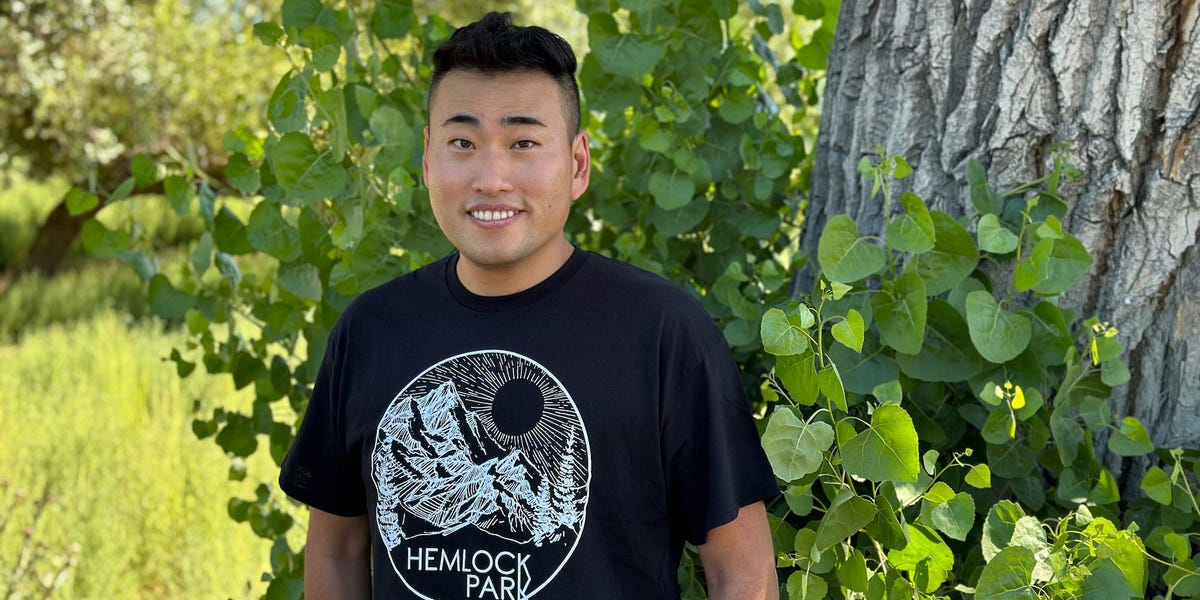This as-told-to essay is based on a conversation with Mikey Kim, an entrepreneur in Nevada. The following has been edited for length and clarity.
My brand, Hemlock Park, was born in Los Angeles during the 2020 COVID-19 lockdowns. I’d been laid off from my full-time job as the CMO of a rug startup that hadn’t yet launched. It seemed like a good time to try launching a new business I could run from home.
I had made some natural bath-and-body products for myself before, so I thought I’d give candle-making a try. Since it was early in the pandemic, I didn’t have access to in-person selling opportunities for small brands, such as farmer’s markets. But I decided to look at the situation as a creative opportunity instead of as a limitation.
I started off with $500 — I made candles using all-natural coconut wax and sold them on Amazon and Etsy. With everyone staying home, I thought many people would buy home more decor and splurge on things such as aromatherapy.
The business grew steadily. In the first year, I just broke even — but then I received offers from both Amazon Lending and Goldman Sachs’ Marcus lending program, which helped me grow the business. I also started using Faire, an online wholesale marketplace, which allowed me to sell my candles in independent retailers’ stores. More than 2,000 stores in the US, Canada, Europe, and Asia now stock Hemlock Park candles.
I launched a Shopify store in the first month of being in business, which has taken a bit longer to develop because it doesn’t have the traffic and exposure that Amazon does. I also decided to shut down the Etsy store to focus on our best-performing channels.
Soon enough, I needed more workspace to make candles. Real estate in LA is expensive, so I started looking for property in northern Nevada near where I grew up. I now have two warehouses there and a team of six pouring and packaging candles. We make about 20,000 candles a month by hand.
Making the product and selling it
Balancing running both sides of the business — making the candles and selling them — can be tricky. You must order supplies, make the products, package them, send them off to Amazon’s fulfillment centers, make sure your inventory is always at a good level to meet demand, and plan marketing and advertising.
You could spend infinite time on Amazon diving into ads, analytics, and data. I used to spend about 20 hours a week managing Fulfillment by Amazon inventory and ads. Over time, I realized it wouldn’t be sustainable to run the Amazon business and oversee sourcing, manufacturing, production, and shipping.
Recently I’ve found other ways to save myself work, such as making use of Amazon’s strategic-account services, which gives you access to an account manager who can pull reports and make suggestions about which areas of your business to put more effort into.
We also have a dedicated ads manager who focuses on our ads and ad spend, and we use some third-party automation tools that adjust ad bidding for key-word ads on Amazon. That alone has saved me about 15 hours a week because I used to manually adjust our bids daily, and we have over 1,000 ads. I now spend about five hours a week just on Amazon.
These days, Hemlock Park generates about 60% of its sales from Amazon, 30% from wholesale channels, and 10% from the Shopify store.
So far, I’ve reinvested all our profits back into the business. I haven’t really paid myself, but that’s the sacrifice I’ve made to grow the business quickly. When I was getting started, Amazon told me that there were over 5,000 candle sellers on the platform and that it would be hard to break through. But I was determined to break into the top 10, and we did that this year. We’re now an eight-figure brand, the top natural-candle seller on Amazon, and seeing 200% sales growth year-over-year.
Give your business time to succeed
My biggest advice to new sellers is to be patient. I think a lot of sellers give up in the first year, and I only broke even in the first year. If I had given up after that, I wouldn’t have the brand I have today. Get past that first — hardest — year and stick with it.
I would also recommend making use of every tool that’s available on Amazon. Get an account manager if you’re able to, and make use of ads on the platform, even if it’s just $10 a day.
Also, if you’re able, offer a gift back on purchases. We partner with One Tree Planted to plant trees with every purchase — I think customers who appreciate our natural ingredients also appreciate efforts to give back and care for the environment. I think it also helps emphasize that consumers are buying from a small business.
If you’re an e-commerce seller and have a story to share, contact this reporter at [email protected] or on the secure-messaging app Signal at 646-889-2143.
Read the full article here





